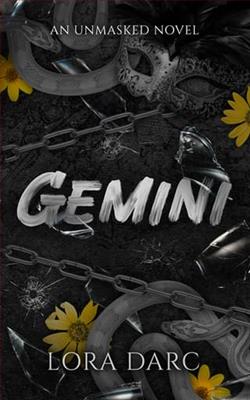Page 21 of See How They Hide
Before this case, Sloane hadn’t partnered solo with Jim. She liked everyone on the team, but hadn’t had a chance to get to know the former director of the Dallas Crime Lab who was the MRT’s forensic and crime scene expert. Jim was the oldest member of the team at fifty-three, and had three young grandchildren he was happy to talk about when he wasn’t talking about crime or baseball, his two favorite subjects.
Crossman’s small but modern two-bedroom adobe-style home was built at the top of a steep, narrow driveway off a winding two-lane mountain road. The other houses in the area were larger, also set back from the road. When Sloane looked up the cost of housing in the area, she was surprised most sold for well over a million. Crossman’s house was estimated at nine hundred thousand dollars, which seemed pricey for a substitute teacher, though they were still running a full background on the victim. Perhaps he had family money or left a lucrative career. One of Sloane’s friends from high school had written a software program that he sold for millions when he was twenty-three.
The police didn’t know much about Crossman. His prints were in the system only because he was required to submit them to teach. Still, his body was in bad shape from decomposition and animal activity after five to seven days of exposure. Hikers had discovered the body Friday morning, and it wasn’t until Monday afternoon that the connection between Crossman and the other two victims had been identified.
Wind and animals had dispersed all but a few dozen red poppies from the area. But the few they found were unusual for the region, especially in late March when the weather was still cold and spring hadn’t yet caught on.
Crossman was thirty-two and bought the house with cash ten years ago for less than half of what it was now worth. He was a substitute math and science teacher at the high school. The school had offered him a full-time position, but he declined. He was considered quiet, private, and smart. He had no friends at the school, and his two closest neighbors—they shared a driveway and got their mail at the same location—only knew him to say hello.
No one knew where he’d lived before moving to Santa Fe, but the sheriff’s department had requested his employee records from the school district. The last time anyone had seen Crossman was a week ago Friday, when he substituted for a teacher on vacation. He hadn’t returned any messages the school left the last week.
The chances that he was killed at around the same time as the first two victims was high. At least within twenty-four hours of Merrifield and Benson.
“Nice place,” Jim said as they entered. “All up-to-date and comfortable. Private.”
She agreed. “It is nice, but I grew up with three brothers. It’s a little too quiet for me.”
“Didn’t you grow up in the middle of nowhere?”
“Outside Bozeman, not exactly nowhere.” She smiled. “We have a working ranch, lots of people around all the time. Roosters made sure we were up before the sun.”
“Must be nice up there, except for the natural alarm clocks.”
“I miss it,” she said, feeling nostalgic. She had used up all her vacation time to spend Christmas and New Year’s with her family. It was good to be home, and she had doubts about accepting Matt’s offer to join the Mobile Response Team. Yet she’d only been asked to commit for two years. If it didn’t work out for whatever reason, he promised she could transfer to the Helena office.
She respected her boss Matt and liked the entire team. Everyone had welcomed her into the fold without much of a hiccup, even though she was a rookie—albeit an older rookie, since she had been in the Marines for twelve years and had turned thirty-five on Christmas Eve.
“Where do you want to start?” she asked Jim.
“I’ll take the bedrooms. You take the living room and den. We’ll meet in the kitchen.”
Jim walked to the back of the house where the bedrooms were located, and she stood in the center of the living room and did a three-sixty, getting a feel of the place.
Yes, private. Yes, comfortable with a central great room that encompassed the living, dining, and kitchen area. Yet, the house felt sterile. Crossman was a tidy person who valued a few nice things. No clutter, no photos, no knickknacks or collectibles. The generic art complemented the Southwestern theme of the house, and the well-made furniture was neutral in color and style.
She walked into the den, which was three steps down from the living room and separated by a low wall. It was a nice space with a view of trees through a large picture window and a small tiled patio off sliding glass doors.
She looked at his books—he didn’t have many, and no fiction, but the tomes he shelved were pristine and ran toward history, science, and how to teach math. No framed diploma, no photos, nothing personal. They wouldn’t have even known what he looked like except his driver’s license photo showing light black skin, golden brown eyes, and a serious expression. Crossman’s license stated he was six feet tall and one hundred eighty pounds. That was confirmed by the ME.
His desk drawers weren’t locked. Inside were immaculate files—banking statements, bills, time card copies, notes from teaching.
Sloane went through the folders thoroughly, but there was nothing that stood out as suspicious. Except his birth certificate.
He was born in Denver, Colorado.
“Jim,” she called out.
He stepped into the threshold of the bedroom. “The guy has nothing. His room is sparser than a priest’s. I’m going to check the guest room.”
She held up his birth certificate. “He was born in Colorado.”
“Text Matt. He’ll want to know right away.”
She took a picture of the document and said, “His computer is still here, the police didn’t take it. It’s password protected, but it could have useful information.”
“They didn’t take the computer?”
She shook her head, sent the image of Crossman’s birth certificate to Matt and Ryder.















